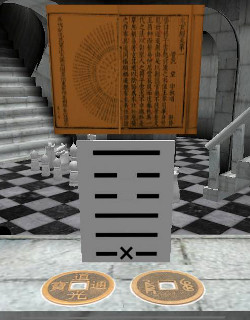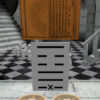The topic is the I Ching also known as the Book of Changes. The I Ching is the world’s oldest divinatory text, if not the oldest divinatory practice. It’s speculated it may have been around for more than three millennia before the birth of Christ, and it’s confirmed at the two millennia mark. It has accumulated a lot of lore and commentary over the millennia as it’s been around for at least five in active practice and it has parallels in other cultures practices of geomancy.
I heard someone synced it up to the Mayan calendar as well. Oh, I am certain it was possible to do so, because for all its depth, the “code” behind it is really rather simple. It doesn’t follow binary mathematics or machine code structure literally, but it can be compared to binary code in that it ultimately works with two values. Yang which could be compared to the 1 in binary code, and yin which can be compared to 0 in binary code though the mathematical component behind it actually assigns a value of 2 to yin and 3 to yang. Each trigram is a symbolic combination of those two attributes, but it is called the Book of Changes for a reason. Neither attribute remains fixed. Yang states in time become yin, and yin states become yang. This is reflected by marking the line as “old” or moving.
Is yang the straight unbroken line and yin is the broken line? Correct.
Now remember the mathematics I mentioned earlier? There aren’t just two values for yin and yang. Each attribute itself has two values. Two numerical values for yin and two for yang, giving four possible states that could be shown in a line of the hexagram. New yin, old yin, new yang, and old yang.

(moving line 1)
The second hexagram is 26.
I don’t intend to discuss all the hexagrams, there are 64 total, but perhaps a visual might provide some useful examples. Each hexagram is read from the bottom up, and there are some basic principles we can explore. Each hexagram is composed of two trigrams, and a trigram is composed of lines reflecting a balance of yin and yang.
How does new yin look compared to old yin? New yin is depicted as a simple broken line. Old yin, as in that hexagram, is depicted as a broken line with that mark through it. In an old yang, they instead draw a circle in the middle.
So it tells you that component is changing? Yes. Old yin changes to yang. Old yang changes to yin, and new yin or yang will endure for the time being. Have you not yourselves noticed that new states don’t tend to disappear easily?
They need to play themselves out. Yes, and that is the core concept behind the I Ching. History repeats itself and everything passes away in time.
Your thoughts are welcome. Be well friends.
Travis Saunders
Dragon Intuitive
~science,mysticism,spirituality~



Leave a Reply